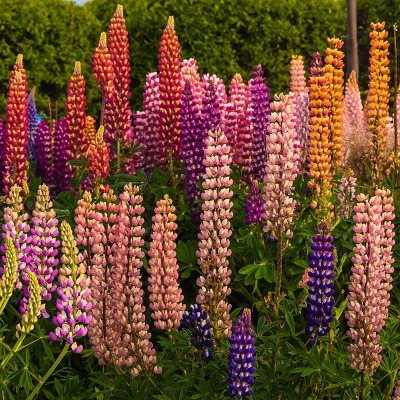-
Out of stock
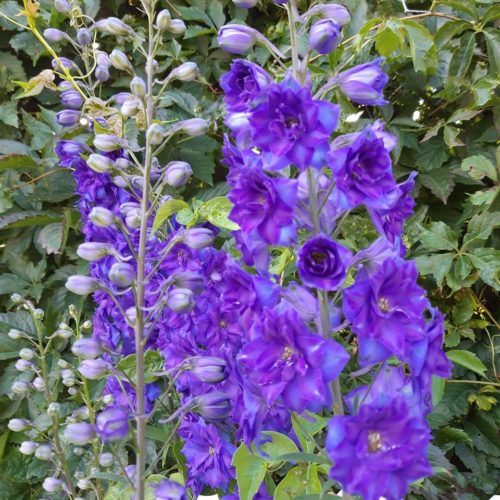 Matures 130-150 days: Also known as Pacific Coast hybrids, Delphinium elatum "Pacific Giant" is a group of regal delphiniums with tall, spiky blooms available in the colors shown. At maturity, the plants reach impressive heights of 1.5-2.5 meters "Pacific Giant" delphiniums are suitable for growing in plant hardiness zones 2 through 9. Long flower-filled spikes bloom in a beautiful blue. The flowers populating the spikes are symmetrically shaped, with huge 8 cm blooms. This delphinium also has mildew resistance.
Matures 130-150 days: Also known as Pacific Coast hybrids, Delphinium elatum "Pacific Giant" is a group of regal delphiniums with tall, spiky blooms available in the colors shown. At maturity, the plants reach impressive heights of 1.5-2.5 meters "Pacific Giant" delphiniums are suitable for growing in plant hardiness zones 2 through 9. Long flower-filled spikes bloom in a beautiful blue. The flowers populating the spikes are symmetrically shaped, with huge 8 cm blooms. This delphinium also has mildew resistance. -
Out of stock
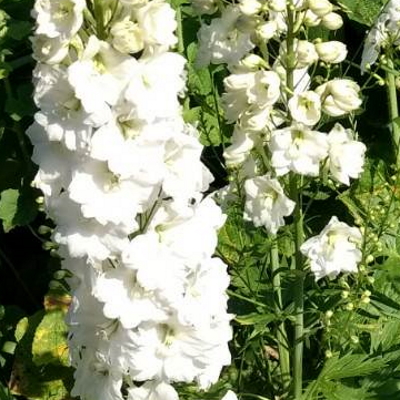
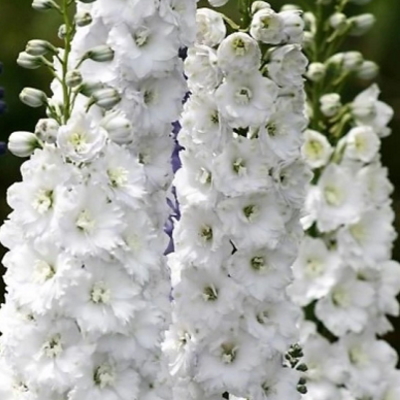 An F1 hybrid breeding breakthrough. Excellent bloom production during short days for cut flowers. GREENHOUSE: Sow in Jan. or early Feb. Freeze seed for 24 hrs. just before sowing, to break dormancy. Use Jiffy Mix or fine sand for a growing medium. Germinate in cool soil at 54°F/12°C for 20 days, according to color (best colors are smallest seedlings). High temp. will prevent germ. Grow seedlings cool, at 60°F/16°C days and 50°F/10°C nights. DIRECT SOWING: Sow outside in late August in cool soil. Freeze seed 24 hours before sowing. Do not pinch the flower heads. For improved blossoms, add lime to the soil each year.
An F1 hybrid breeding breakthrough. Excellent bloom production during short days for cut flowers. GREENHOUSE: Sow in Jan. or early Feb. Freeze seed for 24 hrs. just before sowing, to break dormancy. Use Jiffy Mix or fine sand for a growing medium. Germinate in cool soil at 54°F/12°C for 20 days, according to color (best colors are smallest seedlings). High temp. will prevent germ. Grow seedlings cool, at 60°F/16°C days and 50°F/10°C nights. DIRECT SOWING: Sow outside in late August in cool soil. Freeze seed 24 hours before sowing. Do not pinch the flower heads. For improved blossoms, add lime to the soil each year. -
Out of stock
 Tiny blue flowers are an iconic addition to any garden. Although not a ‘true’ forget-me-not, this species has very similar flowers. This easy-to-grow annual blooms just weeks after planting and grows in almost any sunny spot. Chinese Forget-Me-Not attracts bees, butterflies, and hummingbirds to the garden and makes for gorgeous cut flowers. Self-seeding annual.
Tiny blue flowers are an iconic addition to any garden. Although not a ‘true’ forget-me-not, this species has very similar flowers. This easy-to-grow annual blooms just weeks after planting and grows in almost any sunny spot. Chinese Forget-Me-Not attracts bees, butterflies, and hummingbirds to the garden and makes for gorgeous cut flowers. Self-seeding annual. -
Out of stock
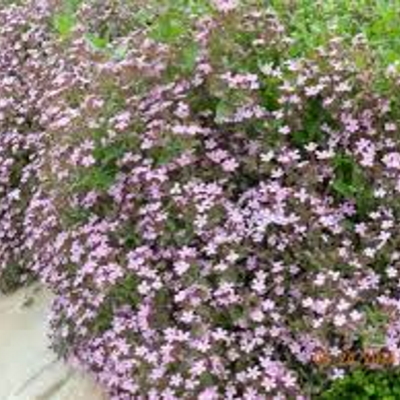
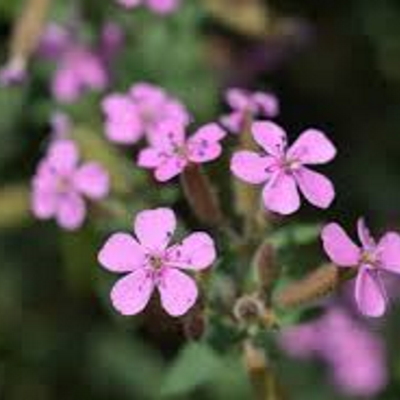 Soapwort is a favourite perennial for cool-alpine and rock gardens. This semi-evergreen blooms from May to August with five-petaled pink flowers joined at the base to form a nectar tube that is highly attractive to bees. Provide good drainage. The roots really can be used to make soap. Rock Soapwort looks marvelous in containers, but best in situations when it can trail and seed itself. Sturdy and easy to grow. Stems are thicker, stronger, taller, and easier to manage than those of annual gypsophila, an otherwise similar flower. 3/4 to 1" dusty pink blooms float above gray-blue, waxy foliage. Branching plant habit. Also known as cow soapwort.
Soapwort is a favourite perennial for cool-alpine and rock gardens. This semi-evergreen blooms from May to August with five-petaled pink flowers joined at the base to form a nectar tube that is highly attractive to bees. Provide good drainage. The roots really can be used to make soap. Rock Soapwort looks marvelous in containers, but best in situations when it can trail and seed itself. Sturdy and easy to grow. Stems are thicker, stronger, taller, and easier to manage than those of annual gypsophila, an otherwise similar flower. 3/4 to 1" dusty pink blooms float above gray-blue, waxy foliage. Branching plant habit. Also known as cow soapwort. -
 One of the latest blooming wildflowers in the Northwest. Rising up to 3 or 4 feet in height with purple/blue/white flowers, this hardy plant adapts to an incredible range of conditions. We find it on windswept and salt-sprayed coastal bluffs, in damp forest clearings along pristine trout streams, and growing out of pavement cracks in the economy parking lot of the airport. In our experience, about the only thing this adaptable plant doesn't stand up to is constant rabbit browsing.
One of the latest blooming wildflowers in the Northwest. Rising up to 3 or 4 feet in height with purple/blue/white flowers, this hardy plant adapts to an incredible range of conditions. We find it on windswept and salt-sprayed coastal bluffs, in damp forest clearings along pristine trout streams, and growing out of pavement cracks in the economy parking lot of the airport. In our experience, about the only thing this adaptable plant doesn't stand up to is constant rabbit browsing. -
Out of stock
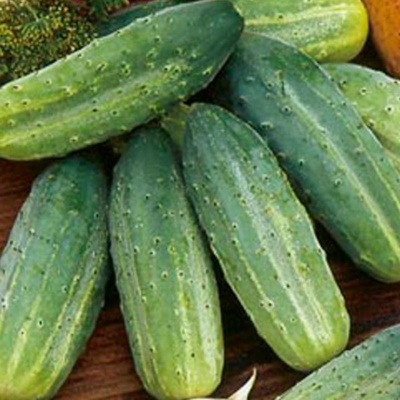 Early (40-45 days) Russian Heirloom pickling variety for open ground and greenhouses. Light green, very delicious cucumbers, 10-14 cm long, weight 100-140 grams. Resistant to powdery mildew. Use fresh and for pickling.
Early (40-45 days) Russian Heirloom pickling variety for open ground and greenhouses. Light green, very delicious cucumbers, 10-14 cm long, weight 100-140 grams. Resistant to powdery mildew. Use fresh and for pickling. -
-
 This cheerful variety will be the star of your cutting garden! An unexpected beauty, it has seemingly endless combinations of red, rose, scarlet, lavender, gold, yellow, salmon, orange, and pink. A perfect choice for beautiful bouquets all summer. Dahlia Flowered Mix zinnias are super showy border plants that grow 90-110 cm tall
This cheerful variety will be the star of your cutting garden! An unexpected beauty, it has seemingly endless combinations of red, rose, scarlet, lavender, gold, yellow, salmon, orange, and pink. A perfect choice for beautiful bouquets all summer. Dahlia Flowered Mix zinnias are super showy border plants that grow 90-110 cm tall -
Out of stock
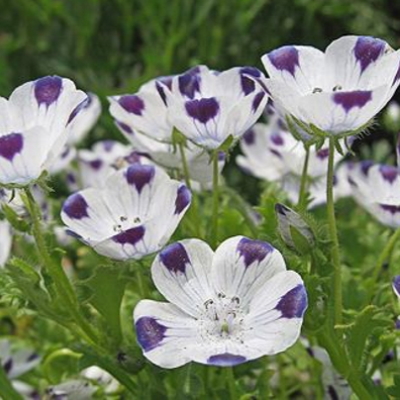
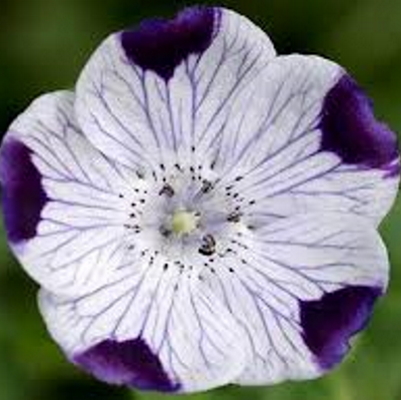 Five spot wildflowers are named for their distinct flowers: 2.5 cm light blue on white blossoms of five petals, each of which is tipped with a vivid, deep purple spot. They are reasonably compact plants that grow to 30 cm high and 20 cm wide and do not spread over the course of the summer. They prefer cool climates, germinating best in soil temperatures of 13-18 C. Perfect for cool springs. They should be able to survive if given lots of shade. They are annuals, and they’ll die back with the first frost. If allowed to die back naturally they reseeds and you will have new plants next year. They bloom consistently and impressively all spring long.
Five spot wildflowers are named for their distinct flowers: 2.5 cm light blue on white blossoms of five petals, each of which is tipped with a vivid, deep purple spot. They are reasonably compact plants that grow to 30 cm high and 20 cm wide and do not spread over the course of the summer. They prefer cool climates, germinating best in soil temperatures of 13-18 C. Perfect for cool springs. They should be able to survive if given lots of shade. They are annuals, and they’ll die back with the first frost. If allowed to die back naturally they reseeds and you will have new plants next year. They bloom consistently and impressively all spring long. -
Out of stock
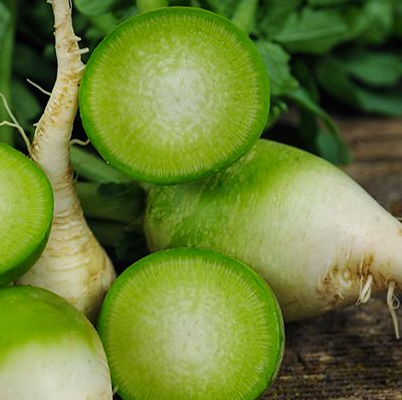 The unmistakably pungent flavor of wasabi can clear the sinuses and invigorate the palate. The energizing flavor found in plants like true wasabi and horseradish root can also be found in the Wasabi Radish of Japan. This is a medium-size oblong Daikon type radish packs a wallop of tingling wasabi heat. Add the peppery flavour to stir-fries and sandwiches or sliced paper-thin to enhance a salad or your favorite Asian recipe. Spring planting benefit is that you can let a couple of plants go to seed as their pods are delicious and pack immense heat. Sow early in spring but late in summer August-September when the soil is 18-22 C produces a great crop. Plenty of water and space helps prevent these delightful hot radishes from going woody.
The unmistakably pungent flavor of wasabi can clear the sinuses and invigorate the palate. The energizing flavor found in plants like true wasabi and horseradish root can also be found in the Wasabi Radish of Japan. This is a medium-size oblong Daikon type radish packs a wallop of tingling wasabi heat. Add the peppery flavour to stir-fries and sandwiches or sliced paper-thin to enhance a salad or your favorite Asian recipe. Spring planting benefit is that you can let a couple of plants go to seed as their pods are delicious and pack immense heat. Sow early in spring but late in summer August-September when the soil is 18-22 C produces a great crop. Plenty of water and space helps prevent these delightful hot radishes from going woody. -
-

